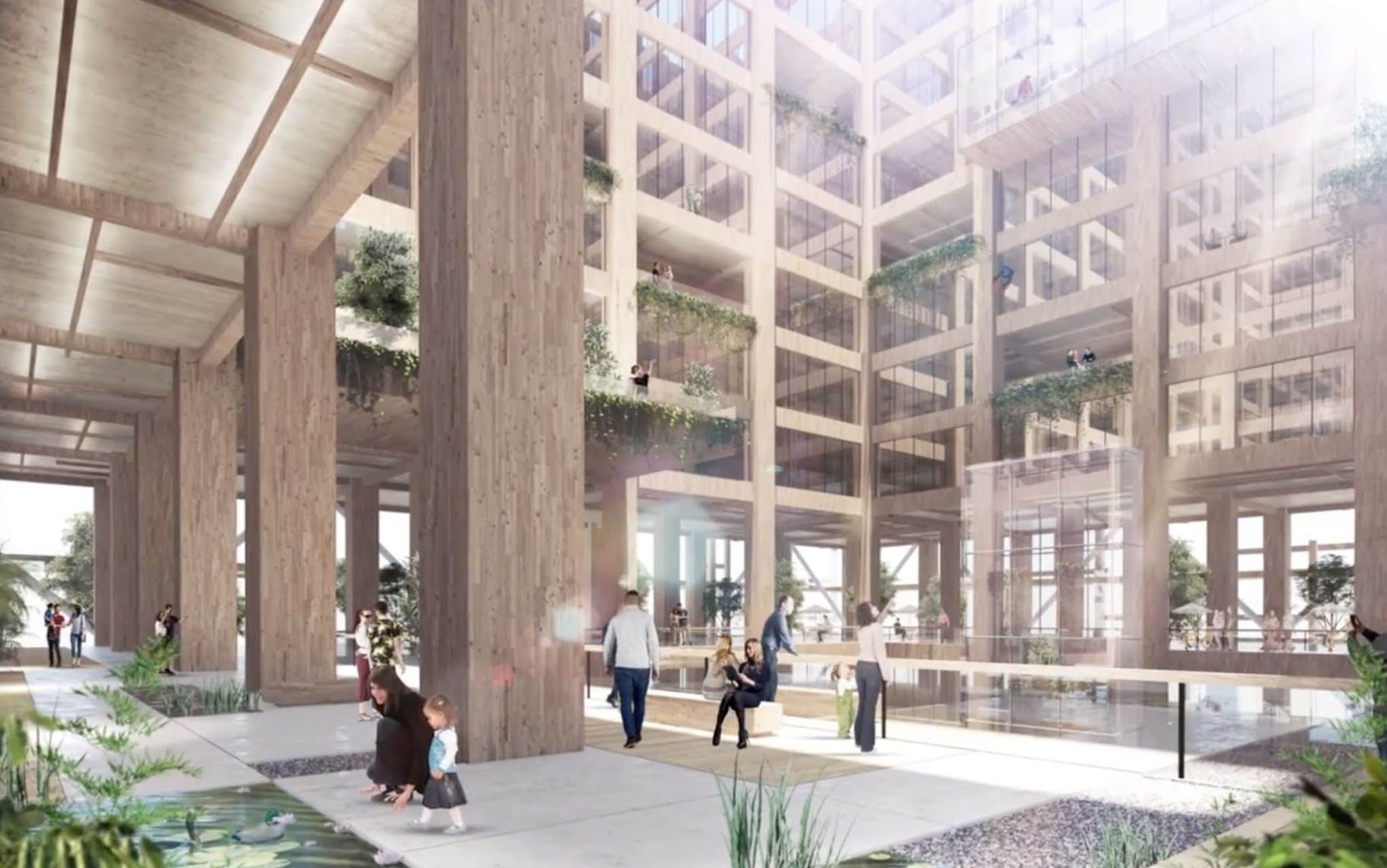The World’s Tallest Wooden Building To Be in Japan
Japanese company plans world’s tallest wooden building
Japanese company has announced plans for the world’s tallest wooden building, a 1,148-foot skyscraper in central Tokyo that will leave all previous wooden structures in its Japan
Sumitomo Forestry Co. Ltd., the timber and forest management arm of the Sumitomo, one of Japan’s largest business conglomerate, plans to complete the W350 Project in 2041 to mark its 350th anniversary.
The ultimate aim, the company said, is to create an environment-friendly city of high-rise buildings made of wood that also helps to “transform the town into a forest”.

The concept for the building has been drawn up by Sumitomo’s Tsukuba Research Laboratory, which has devised a plan for a skyscraper with 70 stories above ground and made of a combination of wood and steel, with wood accounting for 90 percent of the construction material.
The tower will require more than 6.5 million cubic feet of wood and the cost of the project has been estimated at Y600 billion (£4.2 billion).
The company is working with architectural designers Nikken Sekkei and the plans call for a braced tube structure that is able to withstand strong winds and the earthquakes to which Japan is prone.
The completed tower will house shops, offices, a hotel and residential units, while the designers’ sketches show broad balconies covered with greenery, a garden roof, soaring internal open spaces and water features.
When completed, the W350 Project will be both the tallest building in Japan and the tallest wooden structure in the world.
The record for the tallest primarily wooden building in the world is presently held by Brock Commons Tallwood House, a 174-foot-high student accommodation building that was opened at the University of British Columbia in Vancouver last autumn.
Other parts of the world are also exploring wood as a construction material, with the 24-storey HoHo Tower scheduled to open later this year. The building will contain a hotel, apartments and office units and will be 275 feet high upon completion.
Wood grows on designers as a material for bigger and better buildings
An increasing number of architecture companies around the world are turning to wood as the primary construction material for ever-larger buildings, although none has yet attempted a design as ambitious as Sumitomo Forestry Co’s W350 Project.
“New technological advances with construction techniques and composite wood make this a very exciting area at the moment”, said Riccardo Tossani, who designed a retirement facility on the slopes of Mount Fuji that is presently the largest habitable wood structure in Japan.
“Japanese designers – and architects around the world – are very keen to explore ways to make the best use of wood as a construction material, although it has been particularly difficult to make progress in Japan because of the very conservative fire regulations that make building anything over two stories very difficult and beyond three stories virtually impossible”, said Tossani, who set up Riccardo Tossani Architecture in Tokyo more than two decades ago.
For generations, Japan relied on wood to build the vast majority of its buildings, but the material’s inability to withstand fire – most dramatically demonstrated during the firebomb raids on major cities during World War II – has always been its biggest drawback.
“It is in many ways the ideal material because it is a renewable resource as well as being somewhat recyclable”, Mr Tossani told The Telegraph.
“And for Japan, it is an excellent building material because it is readily available, it is pliable and appropriate for a seismic environment”, he said. “Wood gives or flexes with movement in the ground or absorbs movement in its joints; concrete is rigid and does not have that flexibility, so it can crumble”.
And should a wooden building collapse in a tremor, he pointed out, it is more quickly and easily replaced than a concrete and steel structure.
briefed from Source : nextshark
